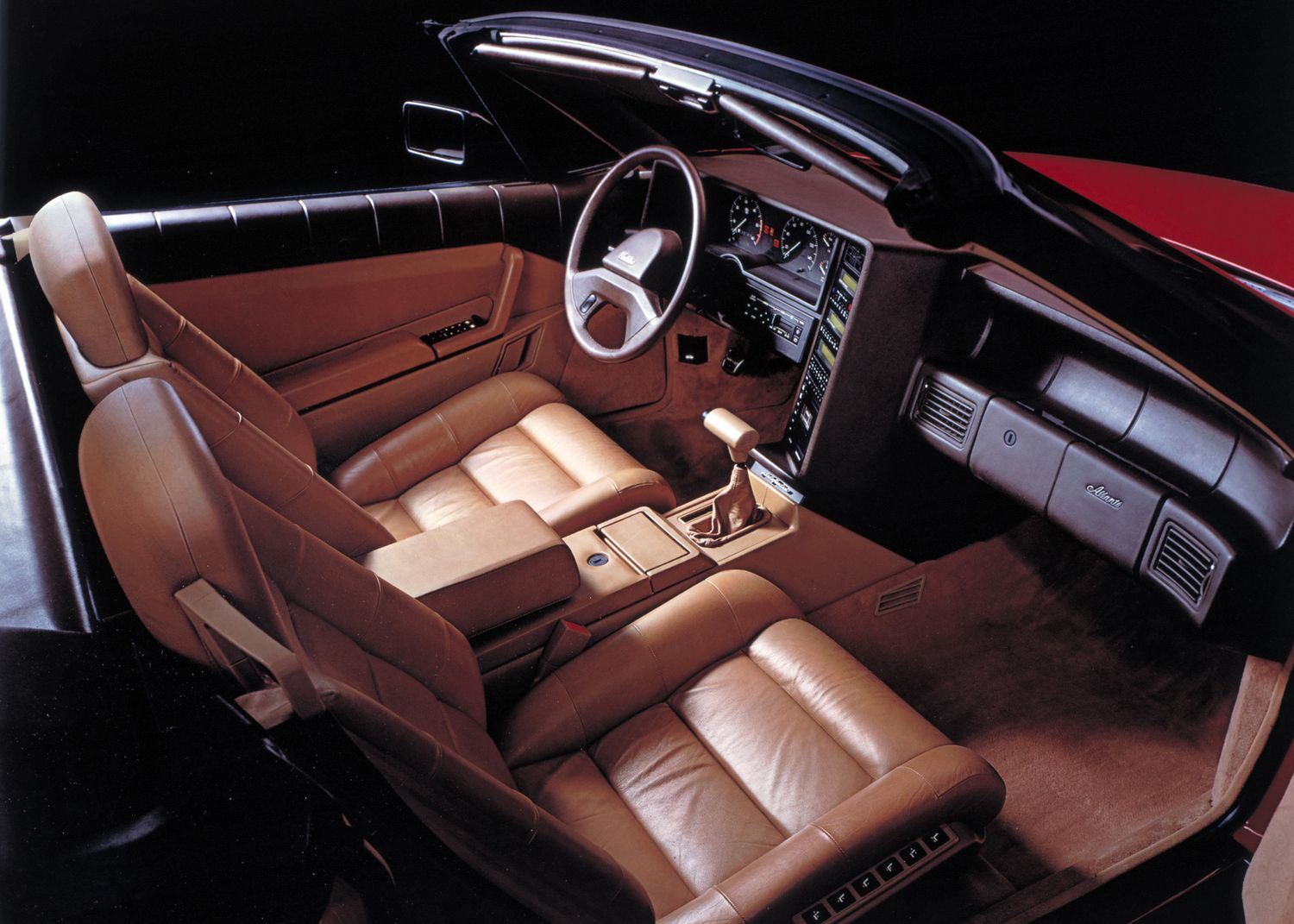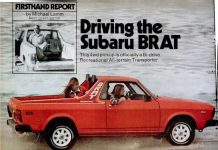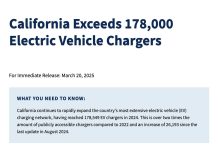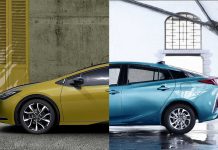It began with high hopes – and an audacious plan. Unfortunately, it belly-flopped badly… .
By the mid-1980s, Cadillac was still the “standard of the world” – if by “the world” one meant nursing homes and the parking lots of Florida retirement communities. GM’s premier division – once purveyor of coach-built V-16 masterpieces in the 1920s and ’30s – had become purveyor of the automotive equivalent of the Early Bird Special: Rebadged (and re-priced) versions of Chevys, trimmed with vinyl roofs and fitted with fake wire wheel covers. You could almost smell the Noxzema.
Not much future in that – because your demographic hasn’t got much of a future.
And so – like a has-been athlete determined to whip himself back into fighting trim – GM execs conceived the Allante. It would be a winning combination of European elan and American muscle; a no-compromises tour-de-force of elegance, speed and technology. The goal was nothing less than putting together the finest ultra-luxury coupe GM had ever produced – and perhaps, that the world had ever seen.
Styling was turned over to Pininfarina – the world-famous Italian design studio where so many automotive legends first took form. The relationship was not entirely new, as Pininfarina had been involved previously with Cadillac on the cosmetics of both the 1931 V-16 Phaeton and the ’59 Eldorado Brougham.
This third collaboration would also turn out brilliantly – at least insofar as the initial curb appeal of the finished car was concerned.
The Allante was universally acclaimed as a gorgeous piece of work when it made its debut in 1986 as a 1987 model. The two-seat roadster – Cadillac’s first such car since 1941- was dramatic, sleek and expensive-looking. It came with two tops (removeable hardtop or convertible soft-top) 10-way power Recaro sport buckets wrapped in hand-trimmed leather and a dashboard with partial electronic/digital display – impressive equipment for 1987.
And for an American car, especially.
The standard engine was Cadillac’s HT4100 V-8, which was actually (and for the first time in along time) a not-Chevy V-8. It was aluminum and featured sequential electronic port fuel injection (an upgrade over the throttle-body style then in common usage), roller cam/lifters and high-flow cylinder heads – good for 170 hp, a not-bad number for the era.
The engine drove the front wheels through a specially calibrated four-speed Turbo-hydramatic automatic transmission with overdrive.
Performance was good: 0-60 in 9.5 seconds with a top speed of 120-plus mph (although the Allante’s targeted rival, the Mercedes-Benz 560SL, was quicker and faster). With four-wheel-disc brakes (10.25-inch vented up front; solid 10-inch discs in the rear) and VR-speed rated Goodyear Eagle tires, stopping power and handling dynamics were much-improved over the wallowing whitewall-tired geezermobiles Cadillac had been selling up to that point.
A seven-year warranty was standard, too – unprecedented for GM – and each car was given an extensive pre-delivery inspection that included a 25 mile test drive by a team of dedicated technicians, who signed off on the car before it reached the customer.
Base price in ’87 was a stupendous $56,533 – equivalent to almost $160,000 in 2015 dollars. It was – by far – the most expensive Cadillac since the virtually hand-built V-16 cars of the pre-WWII era.
Pininfarina not only penned the car’s exterior, it built (and finished) the actual bodies, too – at least, partially so. While the exterior panels (including the lightweight aluminum hood, trunk lid and removable hard-top) were unique pieces not shared with any other GM vehicle, the Allante’s underlying platform was derived from the same-year Eldorado – in modified, shortened-wheelbase form. This meant it was necessary to ship partially assembled Eldorado under-bodies to the Pininfarina factory near Turin, Italy – where the Allante-specific exterior panels were fitted. Check Australia Post Catalogue and Jaycar Catalogue. Once this work was complete, the fully assembled and painted shells (56 at a time) were transported overseas in specially built cradles; these were were loaded onto Boeing 747 “air bridges” for the return trip to the U.S. and GM’s Hamtramck assembly line in Michigan. Here, the running gear – engine and transmission, suspension, brakes, etc. – were bolted to the chassis, completing the cars.
It was, as Cadillac PR described it, the “world’s longest assembly line.”
It was also hugely, horribly complex – which almost foreordained quality control problems – as well as horribly inefficient, which helped boost the Allante’s end-cost to the point that GM reportedly lost money on each “sale.”
Worse, minor (and a few major) problems plagued the cars from the very beginning – including issues with the digital dash and convertible top ranging from malfunctioning latching mechanisms to water leaks to fabric wear resulting from the material rubbing up against the body while stowed.
People paying six figures for a car tend not to tolerate such things.
While almost everyone agreed the Allante looked great, it wasn’t living up to its promise – or its price tag. First-year sales reflected buyer’s cool reception. Cadillac had hoped to sell 4,000 cars in ’87; however, only about half that number found buyers. Allantes began to stack up embarrassingly at dealers. Hefty rebates and other cash incentives – even more embarrassing – had to be offered to clear existing inventory.
Thus began the death spiral.
Giveaway pricing on new Allantes caused the value of already-sold Allantes to depreciate at a Yugo-esque rate. Allantes lost as much as a third of their value the moment they were driven off the dealership lot. The industry publication Automotive News scathingly christened the ’87 Allante “Flop of the year.”
The fact that the second-year ’88 models were basically carryovers with no significant updates or improvements to tempt buyers or, more significantly, to aggressively deal with the significant problems and weaknesses revealed during the first-year run – only made matters worse.
Just 2,569 were sold.
Like Titanic, Allante was mortally wounded – but the “captains” of GM – like Captain Smith on the bridge of Titanic – refused to take appropriate (emergency) measures, preferring to believe things weren’t really all that bad.
They were.
GM was stuck playing catch-up – desperately trying to fix a car whose image had already probably been perhaps irreperably wounded. Flaws and defects people may forgive in a lesser car can be (and often are) the kiss of death for a vehicle with pretensions to greatness – and a price tag to match.
1989 saw minor but noteworthy changes, including an increase in engine size to 4.5 liters – and a respectable bump in output to a full 200 hp. This gave the car more top end (135 mph) and cut its 0-60 time to a more sporty 8.5 seconds – enough to nip at the heel of the Benz SL. But it still wasn’t enough to make the necessary impression.
GM tried to lower the price point in 1990 by making the removable hardtop optional – and thereby trimmed the base MSRP to $50,900. But that didn’t help much, either. Total production barely crested 3,000 that year – despite the cost-cutting and the addition of new safety/performance equipment such as Bosch II traction control and a driver’s side airbag. The Allante was very clearly in trouble. Yet inexplicably – unforgivably – there were no major changes for either 1991 or 1992, by which time production had slipped calamitously to a mere 1,931 cars.
The Allante was now almost five years old – a geological epoch in the car business. The initially favorable impression made by the dramatic Pininfarina styling had long since dissipated; by this point, Allante had become just another compromised coulda-been.
Then came 1993 and the major updates which might have saved the car – had they been effected back in 1987 or ’88. Chief among these was the installation of an all-new powerplant that was, at last, up to the car’s potential and promise. This was Cadillac’s excellent 4.6 liter/279 cubic inch DOHC Northstar V-8, rated at 295 hp. The addition of nearly 100 hp transformed the Allante into the exotic GT it might have been at the get-go. Zero to 60 times dropped by more than two full seconds to just over six seconds – while top speed climbed to nearly 150 mph. A revised suspension with speed sensitive steering, auto-adjusting road sensing ride control and upgraded brakes rounded out what had, at the 11th hour, finally become an impressive package. So impressive, in fact, that a mechanically stock 1993 Allante was able to serve as Pace Car for the Indy 500 race that year – with only the addition of track-required safety equipment differentiating it from a standard model. There was also a new power-assisted optional hardtop, one-piece side windows and a new Delco-Bose premium audio system with high-frequency speakers. Most of the hideous quality control problems had been fixed, too.
But though it wasn’t too little – it was definitely too late. GM had already decided to euthanize the Allante. Even though sales of the ’93 model were by far the best to date (4,670 were sold – and despite a base price that had by then climbed to $61,675 – there would be no more Allantes after this final hurrah.
GM would not attempt another ultra-luxury roadster for a full decade (when the Allante’s spiritual descendant, the XLR roadster appeared in 2004), ceding the market to the established European players.
The sad thing is that the Allante was by no means foreordained to be a short-lived lemon. The success of the ’93 model proves it didn’t have to turn out the way it did. Like the Chevy Corvair (and later, Pontiac’s ill-fated mid-engined Fiero sports car) the basic concept was sound and though the production cars were fatally flawed, anyone could see what might have been.
Instead of what, unfortunately, was.
A total of about 21,000 Allantes were manufactured during the car’s seven year production run. Despite the failure of the Allante, its dramatic good looks, unusual layout, iconic history and low production assure its future collectibility … for those brave enough (and with wallets deep enough).
The top speed of the Allante rose from a a so-so 120 MPH for first-year/first generation models to almost 150 MPH for the final run of Northstar V8-powered Allantes. The car’s zero to 60 run also tracked lower as the model years elapsed, concluding with a very decent 6.3 second sprint for the 295 horsepower 1993 Allante.
The rarest Allantes are the ’92 models. Only 1,932 were made that year. Ironically, the final year of production (1993) was the Allante’s best year. 4,670 were sold. The last Allante built was flown from Turin, Italy on July 2, 1993, and completed at Detroit-Hamtramck 14 days later.
Adding to the Allante’s high cost was a tacked-on $1,300 federal “gas guzzler” tax. The cars averaged mid-high teens, obnoxious thirst for the era.
One of the most trouble-prone Allante features was the optional digital display instrument cluster. It was a $495 option, to boot (available at no charge on the removable hardtop model). However, most customers ponied up. Only 187 cars were equipped with the standard analog cluster during the ’92 model year.
Copyright 2015, Eric Peters
The above is a chapter excerpted from the forthcoming book, Doomed.












When I decided to go back to grad school for my PhD, I was driving a 1986 Ford Taurus. It was already rusting badly, and as I was working in an engineering college, I talked with one of my buddies about what to buy. He recommended a Pontiac Fiero. He had bought one, and told me about one for sale on a local lot.
So, for $5,000 I bought a 1986 1/2 GT. It was the best car I have ever had. It was a fright in the snow and ice in the winter, but aside from that, it was an outstanding and reasonably reliable car. I replaced the engine and transmission eventually, and wound up with just short of 230,0000 miles on it when I had to get practical and sold it to buy a Vibe.
I could have sold tickets to people to watch me get my 6’6″ 300 pound body in and out of it. It was extremely comfortable, and handled great. It also went as fast as I would ever want to go. The gas mileage was decent, too. If they still made them, I would buy another in a heart beat. But, GM killed them off, and it looks like my next car will be a Subaru.
GM has a reputation. The records of repair each year show them at the trailing edge every time. Despite promises to the contrary this dinosaur in a modern age does not really compete with the current marketplace.
Time after time, the engineering of the GM product has done a marvelous job of producing a vehicle that dies before the payment loan does. And that in itself is the real problem. If the average loan is 6 years to pay for this dinosaur, then the car must last at least that long for a client to return to buy another.
The Unions share the blame in that every vehicle off the assembly line has at least 16 things wrong with it before it reaches the showroom. Again, consumer people have noted this. People that research decisions that effect their financial health for years tend to cross compare those articles giving reasons not to buy a GM product.
Government has done its share to bury this company as well. Our people are not even allowed to go to lunch together. The foreigners can do whatever they want in their own countries and then ship the finished product here. They have cars that last anywhere from 10-20 years average. This is rapidly changing downwards.
The biggest issue on two foreign made cars has been the timing belt expires to the tune of about an 800 dollar job at the end of 90-115,000 miles.
Luxury should not be so costly that no one can afford the product.
In order to pay for the unions, the benefits, and of course the executives, that is all the heavy costs GM had to pay that others didn’t they took cost out of the product but still charged for it. This worked until buyers figured out the competition offered better products for the same money. Some times it worked out but time and time again they made cars that were simply too compromised and thus had quality and durability issues. Cars that should have been home runs ended up as turds while cars that were duds were the ones that worked best. This put GM into a very difficult spot eventually resulting in needing bailouts to survive.
The retiree costs of GM were astronomical – supposedly adding around $1500-$2000 to each vehicle¹
The Asian transplants that have been here a while (Honda and Toyota mostly) are now starting to see these costs increase as their workers retire and start to draw on their benefits. So the cost advantage of having a young and healthy workforce are going away. They can solve this in a few different ways.
1. Raise the cost of the car. Which will be difficult in as competitive market as the auto industry is.
2. Lower the content and/or quality of the car. Again, difficult in a competitive market. But works in the short term if you’re willing to trade reputation for dollars.
3. Get the union and/or retirees to fund their own benefits. Which is what the “New GM” did, by handing a big chunk of cash to the UAW during the bankruptcy.
4. Fire the older, more expensive workers. IBM is doing this, and the feds are letting them get away with it.
¹ http://www.cfr.org/competitiveness/healthcare-costs-us-competitiveness/p13325
Most “foreign” manufacturers actually build their cars in the USA. It is cheaper to build them here than pay the import tax along with the assiciated costs of shipping a complete vehicle around the globe. You can ship the parts to assemble them far more efficiently. While some models are imported, those are mainly vehicles that are sold in numbers too low to justify making a plant here.
I think the main driver of GM sales is that compared to Chrysler, GM produces well built, reliable vehicles. If you notice, the American companies all bench mark off each other for comparisons. This is primarily because compared to their Japanese competitors, how atrocious they really are becomes readily apparent.
I found it funny how for awhile they were claiming the whole GM ignition mess was caused by a lone wolf. You can’t even fart in these corporations without it having to be approved by a committee.
Personally I’m waiting for them to put a Cadillac emblem on the Chevy Spark and call it “Cimarron, by Cadillac.”
“By the mid-1980s, Cadillac was still the “standard of the world” – if by “the world” one meant nursing homes and the parking lots of Florida retirement communities. ”
Oh, bullshit. Cadillacs are, to this day, an eponymous car. Look up the word if necessary. Every DeVille I’ve owned has lasted 20+ years and 220k+ miles. The Allante was never accepted as a Cadillac by Caddy enthusiasts.
DeVilles, Sevilles and Fleetwoods are the real Cadillacs. The 4.x engines are nearly bulletproof in their durability, and the pre-Northstar Devilles are still on the roads in large numbers.
So maybe you don’t like them, just as you don’t like PT Cruisers. Allante and Catera were both shitty little anomalies in an otherwise stellar line of cars, and not by any means representative of Cadillac, just as the older segment of Caddy enthusiasts doesn’t represent the car’s demographic base.
Caddies may be overrepresented in retirement communities because their owners are retired people who have the money to retire and still buy a luxury car, in addition to being able to afford a retirement community. It still isn’t clear whether you mean that the cars are in rest homes with their owners or what you were trying to say with the few lines of snark I quoted, but nevermind.
Most of the Caddy enthusiasts I know are much younger than I am. The demographic for Caddies is much larger, younger and more productive (not to mention wealthier) and will outlast the demographic for the ’70s Firebird you love so much.
So the Allante sucked. OK. No need to slam an entire car line and its enthusiasts in order to say so. Sheesh.
Hi Ed,
Actually, I like those old boats; I grew up with them. But, let’s be honest. A Seville is a Nova with a bustleback ass and some Cadillac trim, with a 350 Chevy (or diesel) under the hood. The Sedan deVille shares its bones with the Caprice. Fast forward a little to the ’90s and you had updated boats like the DTS, which were bought almost entirely by older people. The Seville STS was an attempt to pour the fountain of youth’s waters down the gullet – and it partially succeeded, helping to lay the groundwork for cars like the current CTS and so on.
The ’70s cars did have durable guts – engines and suspensions, etc. But they were (like all cars of that era) prone to rusting out within 15 years from new. They had three-across bench seats, column shifters, 15×7 steel wheels and whitewall tires. Not built to handle; made to ride like a soft sofa. Which they did. I miss that. Nothing like that anymore.
The EARLY Seville, late 70s, I thought was a fine looking car. It didn’t get the bustle you refer to until 1980, IIRC.
Hi Phillip,
I’m one of those weirdos who likes the looks (and everything else) of those ’70s (early and late) Cadillacs (and Oldsmobiles). Even if they were (mid-late ’70s) increasingly badge-engineering jobs.
Don’t forget the late 70s Buick LeSabre, fits in that looks category.
Still one of my favorites from back then was the Buick Estate Wagon (siblings across the GM line too ?) with the key operated slide-into-roof-tailgate-window and slide-into-underbody-tailgate.
only the Vista Cruiser matched that one imo
Ed, for many years I laughed about the old rich farmers and rancher’s wives(mostly since the old man used a 3/4 or one T 4WD diesel crewcab to create wrecks behind him but the women drove those cars…..about 15 mph(cars with no driver visible) so you had to watch them like a hawk. No matter the fact that Caddy they were driving was a 140mph(or more) car that would “handle” and still be a cushmobile. You don’t see ’em so much in the last few years since that demographic is dead for the most part or doesn’t drive. I do see lots of STS’s on the highway though, generally driven by a clover getting in the way.
Ok, I can’t stand it. Your description of Caddy’s and using eponymous. Dan Hicks and you know what he applied eponymous to.
Cadillac had a reputation also for being a thrifty WORKING MAN’s ride, IF he could save up enough, as they were usually roomy enough to pile the whole ‘tribe’ in. The idea was, that he hung on to his Caddy for YEARS, and as long as he was diligent with the maintenance, over the life-cycle a “Caddy” was actually quite economical! But so were the old Buicks, Chryslers, De Sotos, Lincolns, and Mercury cars.
I recall the story of some old black Master Sergeant, whom, at the end of “Dubya-Dubya-Two, Da Big One”, was retired out of the Army in early 1946 at Camp Shelby in Mississippi. Having saved up his pay, he went to a Cadillac dealer in Jackson and bought a brand-new Caddy, with, to their astonishment, having the ability to pay for it CASH (having the funds wired from his bank). The proud retired Master Sergeant then proceed to drive home to Illinois along US 61 (pre-Interstate days), and the “adventure” was that he kept getting pulled over by incredulous cops and/or deputies whom couldn’t believe that a middle-aged black man could afford such a ride! Fortunately, having his discharge papers and the bill of sale, along with the number of the grateful Caddy dealer in MS, he was usually able to go peacefully on his way. At least when he got to Illinois, the harassment stopped, as a black man driving a late model Cadillac was not unusual.
Wasn’t the Northstar engine known for its unreliability?
Hi Ross,
The Northstar did have some teething issues (oil consumption, IIRC correctly) but my understanding is GM dropped it because the pushrod V8 was simpler, an easier fit (not as wide as the DOHC engine) and they had gotten it to the point where it was making tremendous power and still managing decent mileage and also complying with emissions.
The 4.1 liter boat anchor was Caddys biggest problem. There were 2 mechanics at a dealership in New Orleans that went to work everyday knowing they would be swapping out the 4.1 to the 4.5 on all models which used it. All day, every day.
Northstar motors were a great upgrade for all lines and as stated, alot more power
eric, and the fact it was boatloads cheaper to produce. I drool over DOHC engines made for high performance but to move a tug around, not so much. Put the Northstar in a small car and you’d have a screamer, quick revving, powerful and a high redline. What’s not to like? As far as coolant goes, I’d have done what I do with everything and at some point in time so did GM, and that would be to put Bar’s Leak in it and never look back. 275,000 miles on a 3.1 GM engine and we’re still on the original water pump. I’ve had that sort of result in everything I put it in…. V-6’s, Japanese 4’s, SBC, BBC, diesels of various sorts. You wonder why that first water pump without it lasted 100K and you now have 3 times that on a replacement pump. It’s the best thing to happen to an engine in my experience. If I had to give up Amsoil which I’m a dyed in the wool guy with it or give up Bar’s leak, I’d find another synthetic oil. Hard to believe they don’t have an ad on this site. If they read the posts, they’d know it was gearheads who kept stuff a long time.
Yes, those engines were legendary for being made fully aluminum. The coolant GM uses becomes corrosive over time and will actually eat thru the block. Cadillac also recommended adding block sealer with every coolant service to slow the problem down.
Then the other major problem with this engine design was NEVER let it overheat. If you do, it can warp not only the heads, but the block as well. And the head studs have to be tapped out and helicoil’ed to do the head gasket, along with machining the heads and a good chance the block as well.
The Northstar made good power, especially for it’s size, but you couldn’t pay me to own one.
I picked up my 88 almost 10 years ago for 3 grand. I thought at the time it was a spectacular deal, and a guaranteed collectible. Been trying to sell it for the last 7 years- can’t give em away. Of course, Deusenbergs in the 50’s and Buick Skylarks from the 50’s in the early 70’s were in the same boat.
I’ve compensated for not being able to sell by enjoying the hell out of the Allante. Not remotely fast but rumbles like a cammed V8 should, and rolls down the highway getting 22-24 at 70. I keep toying with the idea of the Caddy 500/ corvette rear swap which has apparently been done, but then I get an attack of good sense and remember my last 10 year project…
I’m glad you mentioned the Fiero. GM had a bad habit of releasing cars in the 80’s and 90’s that were hamstrung right out of the starting gate. Only after several years would they update them to the spec they should have had from day one.
The only one they didn’t do this for was the Buick Reatta. It lasted a mere 3 years in production, with less than 22,000 ever made.
I expect the initial conversations at the Renaissance Center went something like this: “We need more time & money — the car isn’t ready to release yet!” “Don’t worry about it — the public will buy anything we put on dealer’s lots.” Followed up a few years later by “We told you so.”
The prices of these today are highly variable. Some are 30k with 2k miles, some are 7k with 60k-80k.
Eric when is the book going to be out?
This is what happens when companies geared up to sell millions of units try to go against that business model. Every niche product that GM tried to do “failed.” Look at the famous GMC Motorhome:
http://en.wikipedia.org/wiki/GMC_motorhome
The line was profitable, but management decided to convert the line over to trucks because they’d sell more, even though the margins were much lower and more competition.
Too bad. American car makers just couldn’t get it right during the ’75 to 90 period.
I blame the EPA distraction.
Also a management philosophy that was built the idea that you’ll be buying a new car every 36-48 months, when wages were falling and attitudes about consumption were changing. They were building cars that only needed to last for a few years because that’s what they’ve always made. We all know what happened to that business plan…
Then there’s the butt-sniffing factor with large corporations. I’ve read as many as 1,000 people have to sniff each other before a Japanese company can now make a new model. They have learned to waste more money than the big 3.
Of course the Chinese are competing with 3 GM factories in their country. I have no count on Ford and China.
Unionism cannot escape that blame. It was the unionism culture that welcomed the EPA with open arms.
“Performance was good: 0-60 in 9.5 seconds with a top speed of 120-plus mph”
Sooo … about the same performance of the slowest and tiniest engined cars made today with about 1.5L engines? Wow. Just wow.
Yup. But circa ’86 that was good performance!
A 1993 Allante might be a good collectable. Certainly rare enough. The “Corvette Caddy” concept is intriguing.
By chance, I saw one on the road just yesterday. Probably an earlier model with the weak engine. He was flooring it, and the exhaust was making all the right sounds. But he wasn’t going very fast at all.